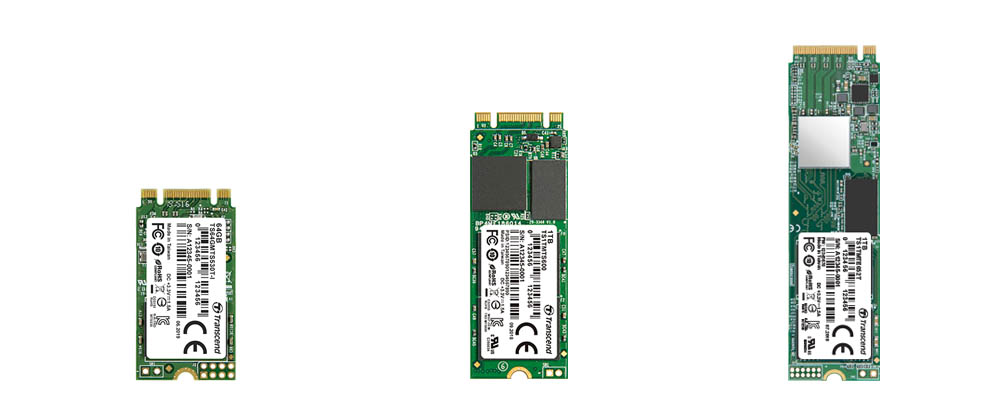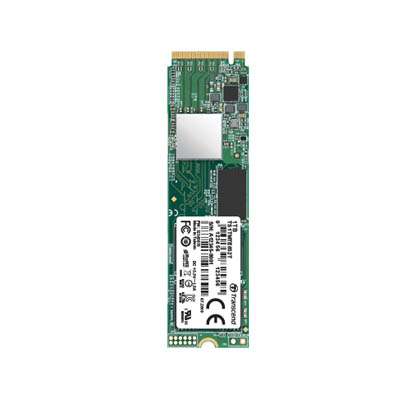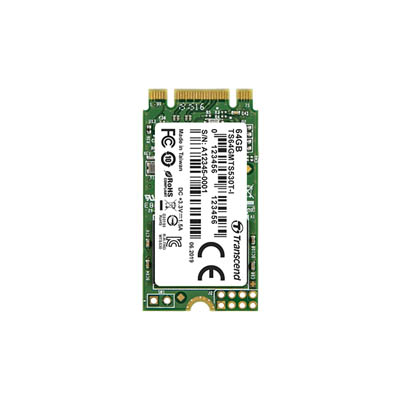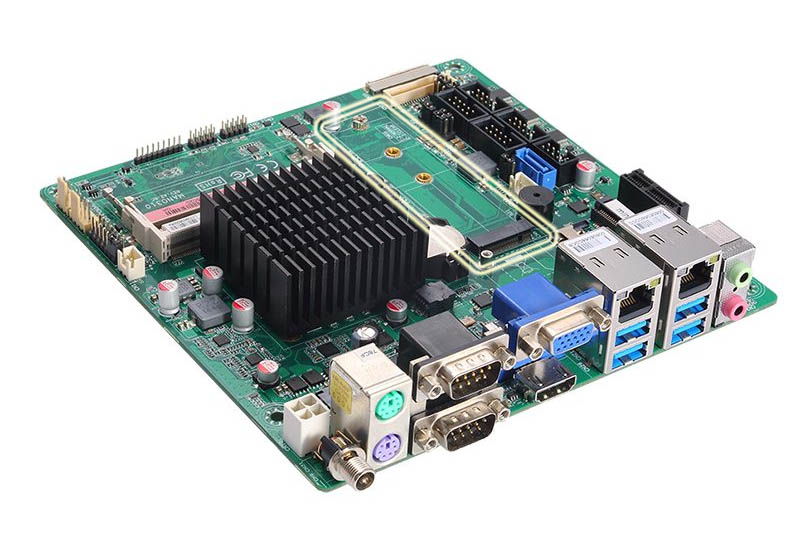In this article:
Understanding M.2 Keys and Sockets for Industrial SSDs
Assured Systems sell a wide range M.2 Keys and Sockets for Industrial SSDs. Understand which is the right M.2 module for your industrial computer.
Solid state drives, commonly known as SSDs, are continuing to become faster and more capable of handling and storing large amounts of data. The full capability of an SSD is limited by the motherboard interface in which it is being connected to.
Traditional mechanical hard disk drives transferred data through Serial ATA 3rd generation interfaces which are limited with a maximum native transfer rate of 6Gb/s. Mini-SATA solid state drives, commonly known as mSATA SSDs, provided a small form factor which is great for industrial computers with a compact footprint, however, are still limited by the SATA 6Gb/s link.
The recent launch M.2 standard, a specification for internally mounted computer add-in cards, was developed to address the transfer rate limitations of mSATA and provide more options for small form factor cards, including SSDs in different sizes and with different storage capacities.
Assured Systems are partnered with Transcend to provide and install storage for industrial and embedded applications. Transcend’s embedded SSDs are widely used in many industries and offer an unmatched track record of excellence in the demanding embedded application market. To ensure the utmost level of quality, Transcend SSDs undergo rigorous testing at all stages of production, including tests for vibration, temperature and humidity, speed, and functionality. Transcend have recently introduced M.2 form factor industrial SSDs featuring 3D TLC NAND flash memory.
Do you require a SATA or NVMe SSD interface?
An M.2 SSD module is connected to an industrial motherboard either through a SATA interface or via a PCI Express (PCIe) lane. Though the M.2 form factor supports SSDs for both SATA and PCIe, an M.2 card may only be inserted in either one of the two interfaces, so check your industrial motherboard documentation or speak to one of our technical sales team to make sure that your M.2 module fits and works with the corresponding sockets on the industrial motherboard.
Utilising the PCI Express Mini Card physical card layout and connectors the M.2 standard improves on the mSATA standard, providing higher performance and capacity while minimizing module footprint. Enterprises and client systems with a greater need for speed can take advantage of the Non-Volatile Memory Express or NVM Express® (NVMe™), an interface specification developed specifically for NAND flash and next-generation SSDs. NVMe leverages existing PCIe technology to efficiently support the growing bandwidth needs of enterprise and client systems. An NVMe-based M.2 SSD module installed on a PCIe x2 lane will run at 15.75 Gb/s, while a module installed on a PCIe x4 lane will run at 31.5 Gb/s – a massive leap in speed and performance.
Choosing the right size M.2 SSD for your Industrial Computer
Available in three dimensions, an M.2 SSDs size can typically deduced from the cards name – 2242, 2260, and 2280. The first two digits represent the M.2 cards width in mm whereas the latter two digits represent the M.2 cards length in mm. The longer the M.2 SSD cards have more storage capacity due to the ability to host more NAND flash chips. The picture below shows Transcend M.2 SSDs in different lengths.

When choosing the right length M.2 SSD you must first consider how many SSDs will be installed into the industrial computer and how this will affect thermal management as this is a significant factor for sustaining performance. Instability and reduced life are a side effect if the industrial computer can not effectively dissipate the additional heat.
M.2 Key IDs, Interfaces and Pin Locations
|
Key ID |
Interface |
Pin Location |
|
A |
2x PCIe x1 / USB 2.0 / I2C / DP x4 |
8-15 |
|
B |
PCIe x2 / SATA /USB 2.0 / USB 3.0 / HSIC / SSIC / Audio / UIM / I2C |
12-19 |
|
C |
Reserved for Future Use |
16-23 |
|
D |
Reserved for Future Use |
20-27 |
|
E |
2x PCIe x1 / USB 2.0 / I2C / SDIO / UART / PCM |
24-31 |
|
F |
Future Memory Interface (FMI) |
28-35 |
|
G |
Not Used for M.2; for Custom/Non-Standard Apps |
39-46 |
|
H |
Reserved for Future Use |
43-50 |
|
J |
Reserved for Future Use |
47-54 |
|
K |
Reserved for Future Use |
51-58 |
|
L |
Reserved for Future Use |
55-62 |
|
M |
PCIe x4 / SATA |
59-66 |
An M.2 SSD is keyed in order to prevent incorrect insertion of an M.2 SSD to an incompatible socket on the host industrial motherboard. You can find the M.2 key type labelled on or near the gold fingers, or edge connector, of the SSD. The M.2 specification identifies 12 key IDs on the module care and socket interface but an M.2 SSD will commonly utilise the B, M and B+M key.
|
M.2 Module with M Key |
M.2 Module with B + M Key |
 |
 |
The M.2 connectors on the host industrial motherboard are called “sockets.” Each socket has a unique mechanical key, and modules are not interchangeable between sockets. The image below has an Industrial Motherboard outlined where and M.2 SSD would be installed into the socket.

|
Socket 1 |
Connectivity socket for Wi-Fi®, Bluetooth®, NFC (near-field communication) or Wi-Gig. |
|
Socket 2 |
WWAN/SSD/Other Socket that will support various WWAN+GNSS (global navigation satellite system) solutions, various SSD and SSD Cache configurations, and other yet-undefined solutions. (If the industrial motherboard has a Socket 2 for a WWAN card and it is not in use, the socket may accommodate a B+M-keyed small M.2 SSD. Please refer to your motherboard documentation for details). |
|
Socket 3 |
SSD Drive Socket with SATA or up to four PCIe lanes. |
Check your industrial motherboard documentation or speak to one of our technical sales team to make sure that your M.2 module fits and works with the corresponding sockets on the industrial motherboard. The industrial computer must be powered down as M.2 modules are not hot-pluggable or hot-swappable. M.2 cards can become damaged or cause harm to the person performing the installation if a hot-plug or hot-swap is performed.
About Assured Systems
Assured Systems is a leading technology company offering high quality and innovative applied computing solutions to the embedded, industrial, and digital-out-of-home markets across the world. Headquartered in Stone, England and with offices in North America, our reach is truly global. Our impressive product portfolio includes a full range of Fanless Embedded Computer Systems, Digital Signage & Multimedia Computer Systems, Touchscreen Panel PCs, Human Machine Interfaces, Vehicle Mount Computers, Rackmount Computer Systems, Single Board Computers, Rugged Laptops & Tablets.










